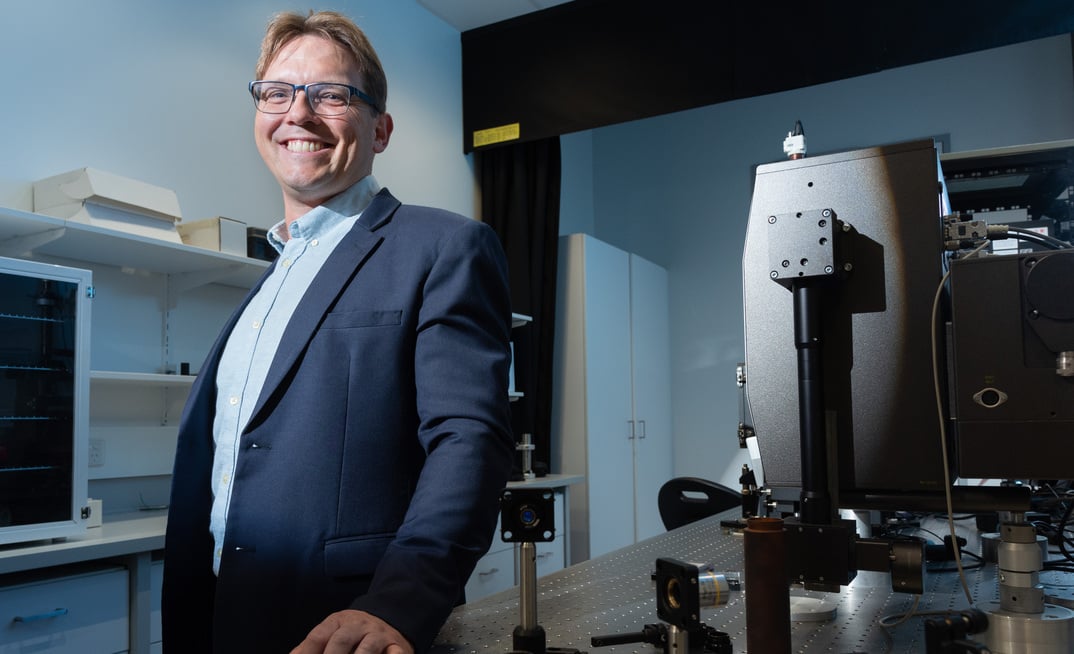The work of Australian laser fusion energy company HB11 Energy has been celebrated in a Special Issues edition of the Laser and Particle Beams journal, showcasing research from a newly-formed HB11 Energy-led consortium of the world’s most advanced laser fusion researchers.
Advancing Fusion Energy: Special Issue Highlights HB11 Energy’s Breakthroughs
Headlining the special issue is a review of the pioneering work since the 1970’s by HB11 Energy co-founder, Professor Heinrich Hora, developing theoretical concepts on how the hydrogen-boron fusion could be realised as a new clean energy source.
Published by Cambridge University Press and Hindawi, the special issue is focused on advances in laser-driven hydrogen-boron fusion without the need for high temperatures. It includes several experimental results demonstrating fusion that confirm many of Hora’s predictions.
The contributions were primarily from the 88 participants in the PROBONO initiative of the European Cooperation in Science and Technology (COST) program led by key HB11 Energy partners in Europe, including its Chief Scientist, Professor Dmitri Batani who is also the lead editor of the special issue.
It seeks to advance new hydrogen-boron fuelled laser fusion energy technologies, employ and develop the world’s best talent, invest in laser fusion research projects, and mobilise a global network of the world’s best minds in the field.
Critically, it will also consolidate and accelerate a growing global movement to shift beyond the use of deuterium-tritium (D-T) fuelled laser fusion (as was demonstrated by the Lawrence Livermore National Ignition Facility) and instead look to hydrogen and boron as fuel.
This shift will allow the global fusion industry to bypass many of the safety and engineering challenges in studying fusion, and also major roadblocks in realizing economically viable energy generation.
Innovative Research Explores Laser-Driven Hydrogen-Boron Fusion
The consortium’s resulting new research analyses novel approaches to laser-driven hydrogen-boron fusion energy and the applications of high-brightness alpha-particle sources, including research by the world’s leading physicists such as:
-
Fabio Belloni, nuclear physicist at the University of New South Wales, who has shown that by exploiting suprathermal effects, proton-boron fusion can be achieved at lower temperatures than previously thought opening the possibility of ignition and fusion burn.
-
Thomas A. Melhorn, leading nuclear physicist at the University of Michigan and HB11 Energy Scientific Advisory Board member, who has shown a roadmap to exploit these new effects in a new scheme to achieve nonequilibrium thermonuclear burn as a new strategy to achieve net-energy gain and economically viable fusion energy.
Until now, the scientific community at large has been mostly focussed on deuterium-tritium (D-T) fusion because the high temperatures required to achieve fusion were much lower than for hydrogen-boron fusion, which was considered by many as impossible to achieve.
However, D-T fusion produces large numbers of high-energy neutrons that are the cause of potential human harm because they interact with other materials, emit neutrons, and produce radioactive waste.
When lasers are used to trigger a hydrogen-boron fusion reaction, it does not possess these same issues which is why, in contrast with many of its peers, HB11 Energy remained focussed on this as a potential source of clean, affordable, and abundant energy production.
It is also why HB11 Energy is now mobilising some of the world’s greatest minds to join the movement.
Despite the clear advantages, however, fusion energy research has been severely inhibited by regulations designed to keep the public safe from nuclear disaster, because the regulations take a blanket approach to all forms of nuclear energy (fission and fusion), despite the HB11 fusion reaction being completely safe.

HB11 Energy Founder & MD Warren McKenzie
According to HB11 Energy, the National Ignition Facility’s net energy gain breakthrough, which also observed non-thermal equilibrium effects, brings greater focus to the possibilities of laser fusion and what it can achieve, particularly with the many greater benefits of using hydrogen-boron-11 as the fuel
Dr Warren McKenzie, founder & Managing Director of HB11, said: “It is a great honour to us all at HB11 Energy to have our world-leading researchers be recognised for their significant scientific developments towards hydrogen-boron fusion energy generation – an approach previously thought by many to be impossible. We are now one step closer to making the 1970’s theories of our cofounder Professor Hora a reality.
“With hydrogen-boron-11 (“HB11”) fusion, the days of nuclear reactor meltdowns or waste may be behind us. As our closest allies, the US, Japan and UK launch their fusion strategies, we expect the world’s governments can be confident in passing new regulations to enable the proliferation of safe fusion energy.
“The technology pathway to a functioning HB11 fusion energy reactor is significantly less complicated, and therefore shorter and much less expensive than any other proposed method of fusion energy. So HB11 Energy’s technologies could create the world’s most economic, lowest-carbon source of abundant energy, that is actually safe.”
# # #
Revolutionizing Clean Energy: HB11
HB11 Energy is creating the future of clean energy; safe, reliable, and unlimited electricity, generated by small nuclear fusion reactors that use abundant fuels with little or no harmful waste. It does this by using laser technology to fuse hydrogen and boron-11. Hydrogen is the most abundant element in the universe, while Boron-11 comprises some 80% of all Boron found in nature, is readily available, and is a stable, non-radioactive isotope.
Unlike other nuclear and fossil-fuel burning plants, HB11 Energy’s energy-generating process does not require large plants. Energy is released in the form of charged particles and can directly be converted to electricity without the need for steam turbines. This approach generates few neutrons through minority side reactions, which minimizes waste issues. There’s no risk of a reactor meltdown and the energy generated can be directed straight to the grid.










